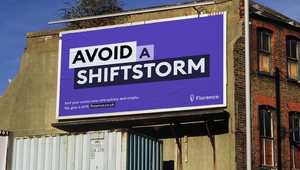
From Baked Beans to Bitcoin, it’s all About People

In the late 1970s, an anthropological study set out to get to grips with a problem that would be familiar in most offices: why do so many people struggle with technology? Observing office workers in their natural environment, the study watched them grappling with photocopiers, fax machines and early desktop computers and then compared and contrasted their approach with that of the designers and engineers who’d made them.
Unsurprisingly, at least in hindsight, the way ordinary people approached tech was vastly different to the way engineers supposed they should. Whilst engineers tended to think in terms of logical sequential processes, with an instruction manual to hand, ordinary people just didn’t think that way. They neverreached for the instruction manual; instead, they learned as they went, asking colleagues task by task, switching it off and on again, copying the ‘tricks’ that worked.
The conclusion was that tech companies should never let engineers design machines by themselves, let alone write instruction manuals. If they wanted their products to be better understood by consumers, they needed to develop empathy for mind-sets that were different from their own or hire non-engineers. The research had an impact across the technology industry and gave rise to the ubiquitous 1980s buzzword ‘user-friendly’.
A call for empathy
Forty years on, there is a new wave of tech companies whose employees might benefit from this call for empathy; this time, not to improve their products, but to improve the way those products are presented to customers.
The technology start-up’s pitch is familiar and, having worked with many start-ups at Snap, we’ve heard a few. It begins with the assertion that they are 'the Uber of' their category, and continues with an impressive array of tech, their platform, algorithms, data sets, and UX, that will deliver this ‘uber-fication’. In an era when technology seems to be the secret recipe of tremendous success, it’s perhaps no wonder that this is their focus.
But whether their category is finance, transport, mattresses or dog-walking, they make the same mistake as their 1970s predecessors in substituting technology for empathy. They believe that their product is their tech, and leave little room for thinking about how ordinary people will perceive or make sense of their product.
Disruption isn’t solely from technology
As we remind our clients, however, even Uber’s disruption came not from their tech but from an empathetic understanding of the people who would use it. The technology that, upon opening the app, presents you with a swarm of promisingly taxi- shaped vehicles circling nearby, was revolutionary at launch. But the problem they knew they were solving was as old as taxis themselves: they understood the frustration of waving hands at passing taxis and standing in the rain waiting for a ride that doesn’t arrive. Indeed, all their tech, from their payment systems to their driver ratings, is rooted in an understanding of customers.
Two clients of ours, whilst both relative newcomers to their categories, have avoided the mistake of believing that their disruption comes solely from their technology.
Purplebricks have a wealth of national customer data that affords them vastly superior insight to that of their mostly localised competitors. The efficiencies of their online platform allow them to streamline the more turgid parts of the home-moving process and their deployment of ‘proptech’ puts them at the forefront of customer experience. But rather than drinking the technology Kool-Aid, they advertise their product in very simple terms their customers understand: a less expensive way of getting the same service.
In a similar vein, Vitality’s disruptive approach to health and life insurance is rooted in a data-driven model and underpinned by lifestyle and fitness tech. But the way they present it demonstrates great customer empathy: insurance that keeps you well rather than waits for you to get sick.
Understanding ordinary people
If such product presentation sounds reductive, that’s because it is. Human beings are simple creatures, cognitive misers biologically programmed to expend as little energy on thinking as they can get away with. So, appealing to simple, enduring needs and truths is critical.
This is something the advertising industry understands well. Empathy is our primary skill. In spite of our industry-wide emphasis on creative originality, actually, the best examples of our craft contain an inherent understanding of how ordinary people will perceive and interpret the product, regardless of whether the product is baked beans or bitcoin.
Just as the workplace anthropologists of the 1970s saw little empathy in those who designed office technology, today we see increasing numbers of startups losing sight of how ordinary people see and use their brands. As they look to technology to deliver the disruption they’ve promised their investors, our task is to steer them back towards empathy and people. Because, however impressive the platform, data or machine learning that underpins their brand, it will disappear noiselessly if ordinary people can’t relate to it, warm to it, and see a place for it within their already-crowded lives.










